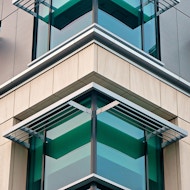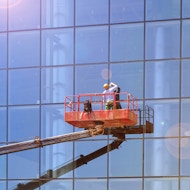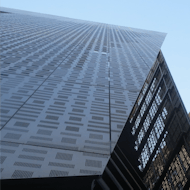| Featured |

|
History
This 2012 article written by a team of researchers at the Windows & Envelope Group at Lawrence Berkeley Lab addresses early design concepts and prototypes for “superwindows”—triple-paned windows with two low-E coatings and krypton gas fill, highly-insulating aerogel windows and vacuum windows. At the time, these products were still in the research and development phases. However, all of these technological advances were considered critical to achieving better fenestration performance.
Read More.
|
|

|
Articles
This article by Helen Sanders explores the barriers to adoption of
existing high-performance fenestration and the correlation between energy code
stringency and business-as-usual fenestration performance across the globe. It
is a call to action to support transformative codes and incentive structures
addressing carbon, resilience and human health in the built environment. We
have the products, and we know what to do, so let’s do it.
Learn More.
|
|

|
Resources
The Building Envelope Design Guide published by the National Institute of Building Sciences addresses both windows and curtain walls. It is meant to be a comprehensive look at thermal performance, moisture protection, fire safety, acoustics, daylighting and more.
Discover More.
|
|

|
Metrics
The BC Reference Procedure is the first methodology using LBNL’s THERM software to be recognized by the Passive House Institute for use in certifying buildings to the International Passive House Standard. Applicable to both the Canadian and U.S. construction market, this methodology enables window manufacturers to calculate the performance of their existing products in Passive House terms.
The methodology also enables users to accurately determine the energy performance parameters required to qualify windows for use in Passive House buildings designed to the International Passive House Standard (IPHS). It guides users on how the industry-standard and publicly available LBNL THERM software, together with a customized Microsoft Excel worksheet, can be used to accomplish this in a manner recognized by the Passive House Institute.
Explore More.
|
|

|
Climate
Decarbonization to fight climate change can take many forms, from clean renewable energy such as solar and wind, to more efficient or all-electric vehicles. A less discussed but equally important piece of the sustainability puzzle is windows, doors, and skylights. Since its inception in 1989, the National Fenestration Rating Council (NFRC) has empowered homeowners to select the windows, doors, and skylights that provide comfort and save energy. As an independent nonprofit organization, NFRC has been a valuable resource over the last 30 years providing fair, accurate, and credible energy performance ratings of fenestration products, which are any opening in a building’s exterior.
Learn More.
|
|

|
Research
The Harvard T.H. Chan School of Public Health Report, Schools for Health: Foundations for Student Success, addresses environmental exposures in school buildings that can impact student health and performance. These exposures include mold, radon, asbestos, lead, and pesticides. Aside from remediation, natural ventilation from operable windows can help by bringing fresh air to the inside of the school building.
Read More.
|
|

|
Books
Lisa Heschong, a keynote speaker at the Facade Tectonics Institute’s World Congress in October, is a strong proponent of daylighting and views. In this excerpt from her recent book, Visual Design in Architecture: Daylight, Vision, and View, she shares several examples to demonstrate their importance in buildings.
See More.
|
|
|






